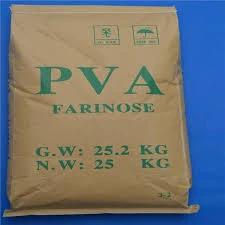Exploring Mortar with Hydroxypropyl Methylcellulose (HPMC)
Hydroxypropyl Methylcellulose (HPMC) has emerged as a crucial additive in the formulation of modern mortars and construction materials. Its versatility and unique properties make it an essential component in a wide range of applications, particularly in the building and construction industry. This article aims to explore the significance of HPMC in mortar formulations, its properties, and its impact on construction practices.
Understanding HPMC
HPMC is a semi-synthetic polymer derived from cellulose, a natural polymer found in the cell walls of plants. By modifying the cellulose structure, HPMC achieves a range of functionalities, including water retention, binding, and film-forming capabilities. These properties make HPMC an invaluable ingredient in mortar formulations used for tile adhesives, plasters, and other cement-based materials.
The Role of HPMC in Mortar
1. Water Retention One of the most significant advantages of incorporating HPMC into mortar is its ability to retain water. During the application of mortar, particularly in dry environments, water evaporation can compromise the setting and bonding of the material. HPMC minimizes this evaporation rate, ensuring that the mortar remains workable for longer periods, allowing for better adhesion and curing.
2. Workability HPMC improves the workability of mortar, making it easier to mix, spread, and manipulate. This is crucial for construction workers who need to apply mortar efficiently without compromising the quality of the bonding. Improved workability translates to faster application times and reduced labor costs on construction sites.
mortar hpmc

3. Thixotropic Properties HPMC exhibits thixotropic behavior, which means that it becomes less viscous when subjected to shear stress. This property allows the mortar to be easily applied and shaped but ensures that it remains stable once applied, preventing sagging or slumping. This is particularly important in vertical applications where the mortar must adhere without flowing away.
4. Enhanced Adhesion The incorporation of HPMC in mortars enhances the overall adhesion between the mortar and the substrates. This leads to improved performance of the final product, ensuring that tiles, stones, or bricks remain securely bonded, even in harsh environmental conditions. The stronger adhesion reduces the risk of delamination and increases the longevity of the construction.
5. Reduced Cracking Mortar formulations with HPMC exhibit reduced shrinkage during the drying process, thereby minimizing the risk of cracking. Cracks in mortar can lead to significant structural issues over time, and therefore, using HPMC can enhance the durability and integrity of the constructed elements.
Environmental Considerations
In recent years, the construction industry has been shifting towards more sustainable practices. HPMC is considered an environmentally friendly option compared to synthetic polymers. Its derivation from natural cellulose makes it biodegradable, reducing the ecological footprint of construction projects. Furthermore, the efficiency it brings to mortar formulations means that less material is required overall, further contributing to sustainability efforts.
Conclusion
The incorporation of Hydroxypropyl Methylcellulose (HPMC) into mortars represents a significant advancement in construction technology. With its numerous benefits, including improved water retention, workability, adhesion, and reduced cracking, HPMC plays a vital role in enhancing the performance and longevity of construction materials. As the industry continues to evolve, the use of HPMC can be a cornerstone in creating more effective and sustainable building practices. Its adoption not only elevates the quality of construction projects but also supports ongoing efforts to minimize environmental impacts, marking HPMC as a key player in the future of construction materials.




